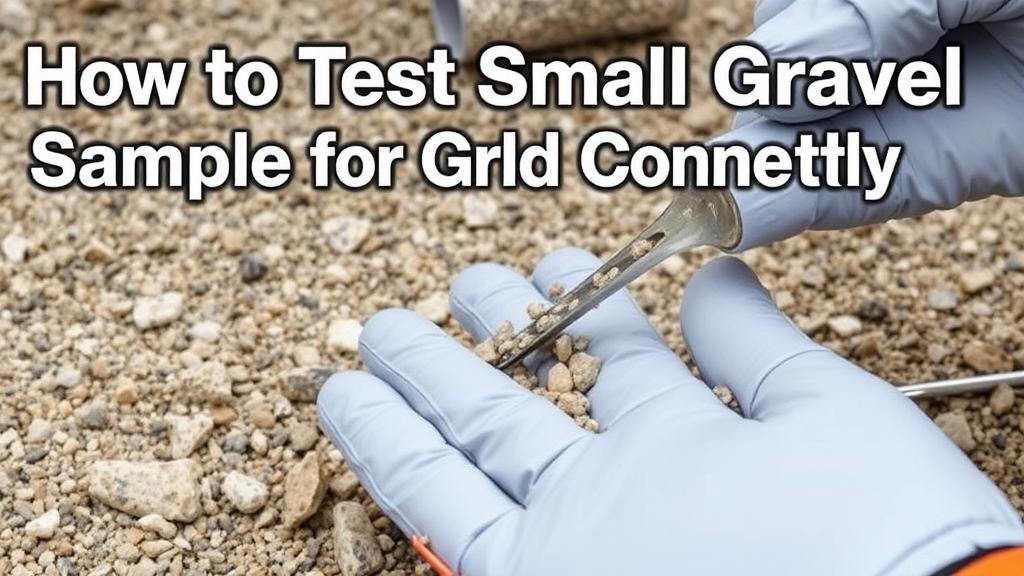How to Test Small Gravel Samples for Gold Content Quickly
How to Test Small Gravel Samples for Gold Content Quickly
Testing small gravel samples for gold content is critical for prospectors and miners. Efficient testing methods can yield quick and accurate assessments, helping in deciding whether further extraction efforts are warranted. This article outlines several quick techniques, offers insights into their effectiveness, and discusses the necessary tools and procedures involved.
Understanding Gold Content Testing
Gold testing involves evaluating a sample to determine its concentration of gold. Various methods exist, ranging from simple panning techniques to advanced chemical assays. Prospective miners often need to balance accuracy with speed, especially in remote locations where time is of the essence.
Key Methods for Quick Testing
Below are some of the most widely used methods for testing small gravel samples for gold content:
- Panning: A traditional method that requires minimal equipment and is effective in determining gold presence.
- Dry Washing: Useful in arid regions, where water is scarce. This method separates gold from gravel through air currents.
- Electronic Gold Testers: Handheld devices that can provide immediate results, although they are typically designed for identifying gold jewelry rather than raw gravel.
- Fire Assay: A more technical approach that provides highly accurate results but is not as rapid as other methods.
The Panning Method
Panning is one of the oldest and most straightforward methods for testing gravel. It involves using a pan to wash away lighter material, leaving behind denser components, including gold. Heres a step-by-step guide:
- Fill your pan with the gravel sample.
- Add water to the pan and agitate the sample to separate heavier particles.
- Carefully tilt the pan to allow lighter materials to wash away.
- Examine the remaining material for visible gold flakes.
This method can be performed quickly and can yield immediate results. For example, in a study conducted by the U.S. Geological Survey, panning helped identify promising gold deposits in just a few hours of fieldwork.
Dry Washing Technique
Dry washing is particularly effective in regions with limited water supply. This technique utilizes a dry washer, which employs a sieve and a fan to separate gold through airflow. Here’s how it works:
- Load the gravel into the devices hopper.
- Start the fan to create airflow that moves lighter materials away.
- Collect the concentrated materials that remain for further analysis.
The efficacy of dry washing is illustrated by a case study in the Mojave Desert, where miners recovered significant quantities of gold while conserving water resources. But, this technique requires an initial investment in equipment.
Using Electronic Gold Testers
Electronic gold testers are gaining popularity due to their ability to provide rapid assessments. These devices function by measuring the electric conductivity of a sample. But, they are primarily suited for testing finished products rather than raw gravel. Consider the following:
- Ensure the device is calibrated properly for accurate readings.
- Use the tester after initial separation methods, such as panning, to get detailed results on potential gold purity.
The immediate feedback provided by electronic testers can be invaluable in deciding the next steps in mining operations, although they should be used in conjunction with other methods to ensure accuracy.
Understanding the Fire Assay Method
Although fire assay is not as quick as the previously mentioned methods, it remains the industry standard for accuracy and reliability. This process involves melting the sample at high temperatures to isolate gold. The steps include:
- Preparing a small sample.
- Mixing it with fluxes before placing it in a furnace.
- Cooling and dissolving the resulting material to extract gold concentrates.
Fire assay yields precise quantifications but requires specialized equipment and longer processing times, making it less suitable for quick tests.
Practical Considerations and Best Practices
When testing small gravel samples for gold content, consider the following:
- Always wear protective gear when handling chemicals or using equipment.
- Be aware of local regulations regarding gold prospecting and mining activities.
- Document results accurately for future reference and analysis.
Conclusion and Actionable Takeaways
To wrap up, testing small gravel samples for gold content can be accomplished quickly through various methods such as panning, dry washing, electronic testers, and fire assays. Each method has its strengths and weaknesses, and the choice often depends on available resources and specific project requirements. For prospectors, the key is to combine these methods efficiently to achieve both speed and accuracy in their gold testing endeavors.
By following the provided techniques and practices, miners and hobbyists can make informed decisions regarding their gold prospecting efforts, potentially leading to profitable outcomes in their ventures.



